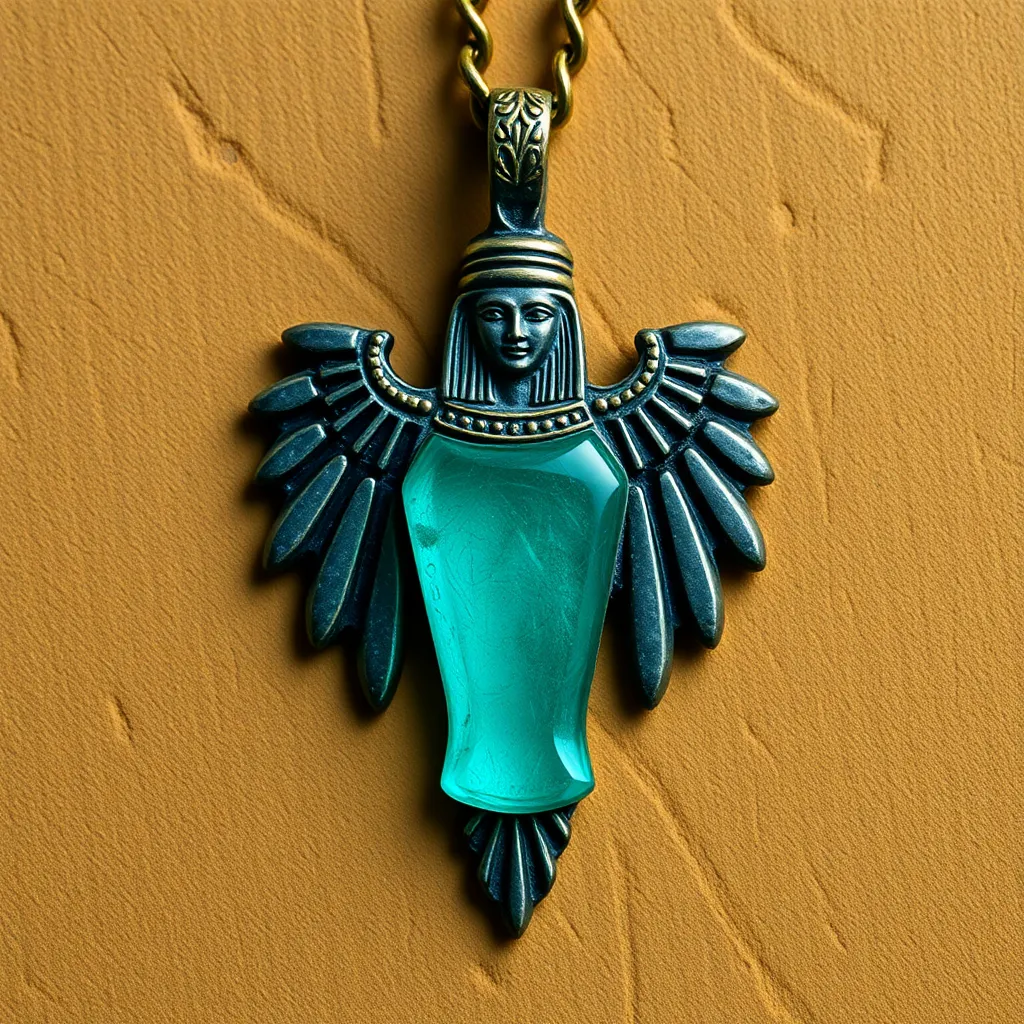The Role of Amulets in Egyptian Spiritual Practices
I. Introduction
In the context of ancient Egypt, amulets were small objects that held significant spiritual and protective properties. These artifacts were crafted to provide various forms of protection, health, fertility, and prosperity to their wearers. The importance of amulets transcended mere ornamentation; they were integral to both spiritual and daily life, serving as conduits for divine power and protection.
This article will explore the historical significance of amulets, their varied uses in both funerary and daily contexts, and their enduring legacy in modern spirituality.
II. Historical Context of Amulets in Ancient Egypt
The practice of using amulets in ancient Egypt dates back to the earliest periods of Egyptian civilization. Initially, amulets were simple objects made from natural materials, but as the culture evolved, so did the complexity and artistry of these items.
- Origins: The use of amulets can be traced to the Predynastic period (c. 5000–3100 BCE), where early forms were made from materials like stone and clay.
- Key Periods: The Middle Kingdom (c. 2055–1650 BCE) marked a significant increase in amulet production, particularly with the rise of the cult of Osiris.
- Socio-Political Influences: The design and significance of amulets were often influenced by the reigning pharaohs and their religious reforms, reflecting the socio-political landscape of ancient Egypt.
III. Types of Amulets and Their Symbolism
Amulets were crafted from various materials, each chosen for its perceived protective qualities. Common materials included:
- Stone (e.g., lapis lazuli, turquoise)
- Metal (e.g., gold, silver)
- Glass
- Clay
Some of the most popular amulets and their meanings include:
- Scarab: Symbolizing transformation and rebirth, the scarab beetle was believed to protect the wearer and assist in their journey to the afterlife.
- Ankh: Representing life and immortality, the ankh was often used as a symbol of protection and a talisman for health.
- Eye of Horus: This amulet was associated with protection, royal power, and good health, embodying the protective qualities of the goddess Wadjet.
Amulet designs varied significantly across different periods and regions, influenced by local beliefs and artistic styles, which contributed to the rich tapestry of Egyptian spirituality.
IV. Amulets in Funerary Practices
In ancient Egyptian funerary practices, amulets played a crucial role in safeguarding the deceased. They were often placed in tombs to ensure protection and guidance in the afterlife.
- Protection of the Deceased: Amulets were believed to protect the body from malevolent spirits and decay.
- Specific Amulets: Common amulets found in tombs included the scarab for rebirth, the ankh for life, and the heart scarab to ensure a favorable judgment in the afterlife.
- Ancient Texts: Inscriptions from the Book of the Dead often referenced specific amulets, detailing their intended purposes and the prayers associated with them.
V. Amulets in Daily Life
Beyond their use in funerary contexts, amulets were also prevalent in the daily lives of ancient Egyptians. They served various practical and spiritual functions, including:
- Protection Against Evil: Many Egyptians wore amulets to guard against misfortune, illness, and malevolent forces.
- Symbols of Health and Prosperity: Amulets were often associated with fertility and abundance, making them popular among couples wishing to conceive or farmers hoping for a bountiful harvest.
- Personalization: Individuals frequently personalized their amulets, selecting specific symbols that resonated with their personal beliefs and aspirations.
VI. The Ritual and Spiritual Significance of Amulets
The use of amulets was deeply intertwined with ritual practices and the worship of deities. Their significance extended beyond mere physical items; they were vessels of spiritual energy.
- Ceremonial Practices: Amulets were often incorporated into rituals, such as blessings and protective ceremonies, enhancing their power through sacred rites.
- Connection to Deities: Many amulets were associated with specific deities, believed to embody their protective qualities and blessings.
- Magic and Incantations: The effectiveness of amulets was often enhanced by accompanying spells and incantations, reinforcing their protective powers.
VII. Legacy of Egyptian Amulets in Modern Spirituality
The influence of ancient Egyptian amulets extends well into modern spirituality. Contemporary practices often draw inspiration from these ancient beliefs.
- Contemporary Practices: Many spiritual communities today incorporate amulets into their practices, using them for protection, meditation, and connection to ancient wisdom.
- Resurgence of Interest: There has been renewed interest in the power of amulets, with modern interpretations often focusing on their psychological and emotional benefits.
- Interpretation and Adaptation: Ancient beliefs are frequently adapted to fit modern spiritual frameworks, allowing individuals to connect with the past while navigating contemporary life.
VIII. Conclusion
Amulets held profound significance in ancient Egyptian spirituality, serving as powerful symbols of protection, health, and connection to the divine. Their enduring legacy offers valuable insights into the beliefs and practices of ancient Egyptians, illustrating how these artifacts were intertwined with daily life and the afterlife.
As we continue to explore the rich history of amulets, we gain a deeper understanding of the spiritual landscape of ancient Egypt and the ways in which these practices resonate with modern spirituality. The study of amulets presents an exciting opportunity for further research, inviting scholars and enthusiasts alike to delve into the mysteries of Egypt’s past.




